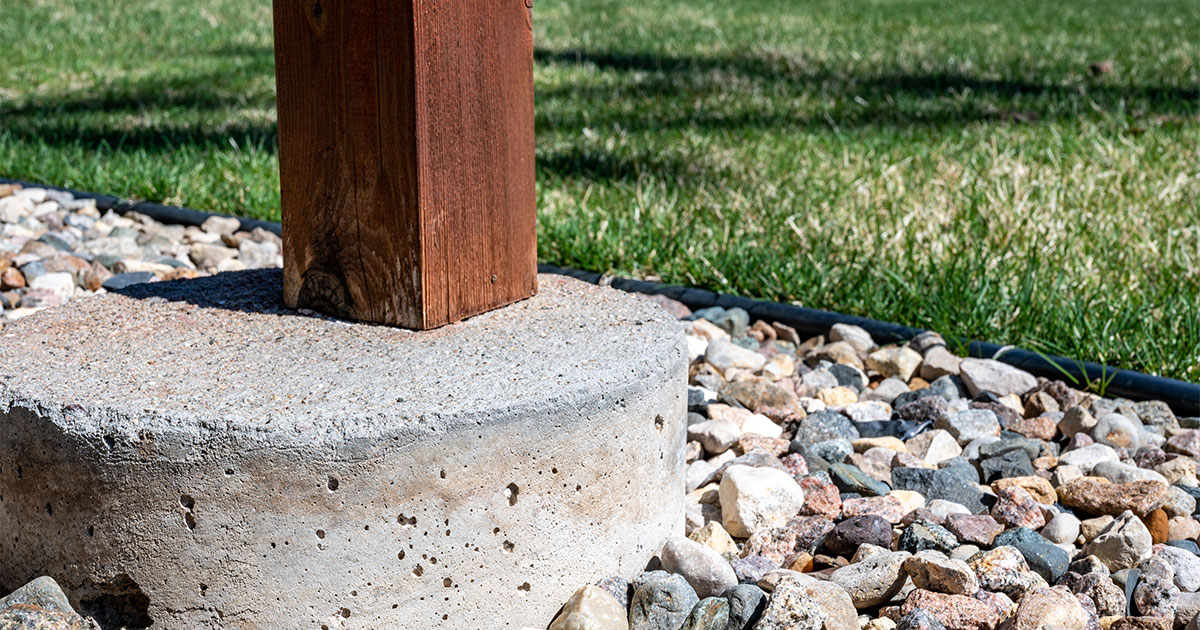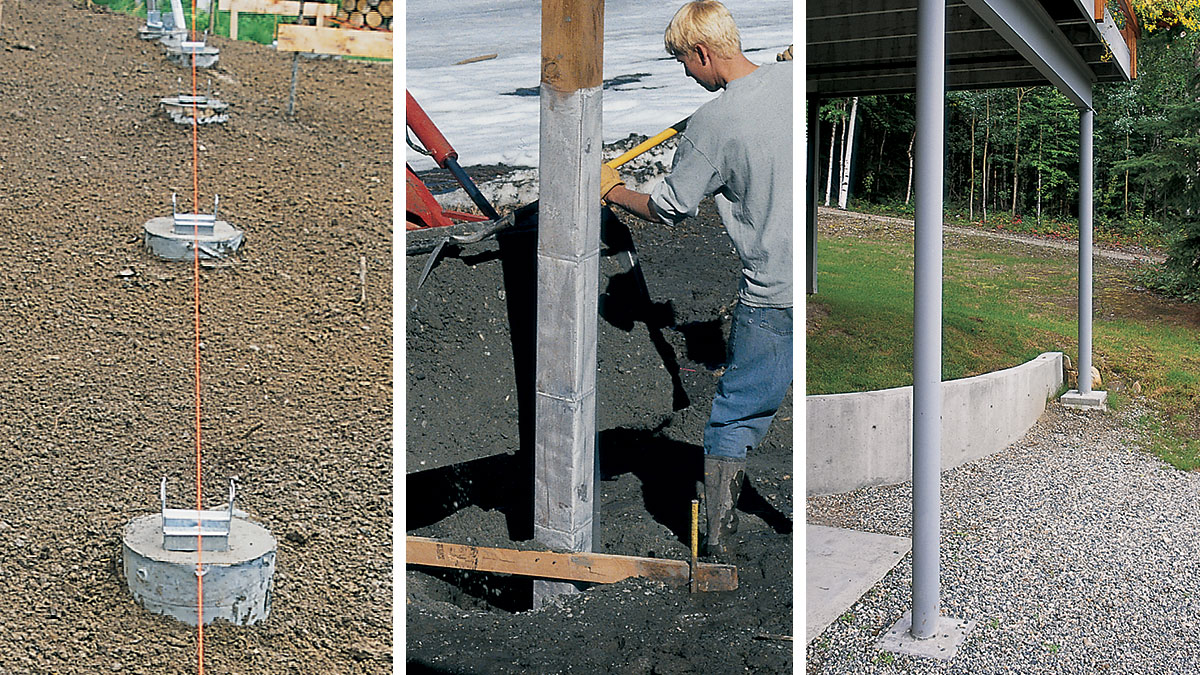Deck Footings 101: Building a Strong and Steady Exterior Sanctuary
Wiki Article
Vital Tips for Solid Deck Footing: A Comprehensive Guide
Welcome to "Important Tips for Solid Deck Footing: A Comprehensive Guide." In this comprehensive overview, we will certainly supply you with the necessary expertise and approaches to make sure a solid and steady structure for your deck. Building a deck is a financial investment that calls for cautious planning and attention to information, especially when it concerns the footing. This guide will cover essential elements such as selecting the right materials, examining dirt conditions, determining load ability, establishing appropriate footing deepness, and accomplishing accurate installation. By adhering to these suggestions, you will be outfitted with the required information to construct a deck that not only enhances your outside space yet likewise stands the test of time. Let's dive right into the world of strong deck footing and develop a structure you can rely on.Picking the Right Deck Footing Materials
When selecting the best deck ground materials, it is necessary to think about the certain needs and demands of your job. The high quality and sturdiness of the grounds straight impact the stability and durability of the deck framework. When picking deck ground products., there are several factors to think about.Clay soils have a tendency to keep water, while sandy soils drain quickly. Recognizing your soil conditions will certainly aid you select footings that can effectively sustain the weight of the deck and stop problems such as heaving or sinking - Deck Footings.
Severe temperatures, dampness levels, and freeze-thaw cycles can affect the efficiency of deck grounds. In such situations, using frost-resistant products or installing grounds below the frost line can aid reduce these threats.
Furthermore, the dimension and design of your deck need to likewise affect your option of footing products. Larger or more intricate decks may call for deeper or reinforced grounds to guarantee ample support. Recognizing the particular lots requirements of your deck will certainly assist you identify the proper materials to utilize.
Inevitably, selecting the ideal deck ground materials includes mindful factor to consider of factors such as soil conditions, environment, and deck design. By taking these elements right into account, you can pick footings that supply the needed assistance, enhance the stability of your deck, and guarantee its long life.
Correctly Analyzing Soil Conditions
To appropriately examine dirt conditions for your deck footing, it is vital to thoroughly evaluate the load-bearing capabilities and water drainage homes of the dirt in your area. Comprehending the dirt's capability to birth weight and its capacity to drain pipes excess water will certainly help ensure the stability and durability of your deck.When evaluating the load-bearing capability of the dirt, it is essential to take into consideration factors such as soil compaction, density, and type. Different soil kinds have differing load-bearing capacities, with compressed dirts typically offering much better assistance than sandy or loosened dirts. Carrying out a soil examination can supply useful info about the soil's ability to support the weight of your deck.
Additionally, evaluating the drainage residential properties of the dirt is vital to avoid water build-up and potential damages to your deck - Deck Footings. Poor water drainage can cause moisture accumulation, which can weaken the structure and create structural issues. It is essential to analyze the soil's capability to drain water effectively to stay clear of these problems
Consulting with an expert designer or dirt specialist can significantly assist in effectively assessing soil conditions for your deck ground. They can supply professional advice and support, guaranteeing that you select the proper footing layout and materials based upon the certain qualities of the dirt in your area. Taking the time to extensively evaluate dirt conditions will certainly help you construct a resilient and strong deck.
Calculating Lots Capacity for Grounds
One essential action in ensuring the security of your deck is to accurately compute the lots capacity for your grounds. Deck Footings. The lots capacity describes the maximum amount of weight or tons that the grounds can safely support without creating any architectural damages or failure. Determining the lots capacity for footings entails thinking about numerous factors such as the size and kind of grounds, the sort of soil, the dimensions and weight of the deck, and the live lots and dead load that the deck will go throughTo compute the load capacity, it is necessary to consult local structure codes and guidelines as they offer particular standards and requirements for deck building. These codes take into consideration variables such as soil bearing capacity, frost depth, and minimal ground dimensions. In addition, it is essential to involve the solutions of an expert service provider or an architectural designer who can perform the required computations and evaluations to guarantee the security and stability of the deck.
When determining the load capacity, it is vital to precisely figure out the online tons and dead load that the deck will experience. The live load describes the weight of people, furnishings, and any various other article source products that will certainly be positioned on the deck, while the dead tons describes the weight of the deck itself. By accurately figuring out these loads and considering all relevant factors, you can ensure that your grounds are sufficiently designed to support the weight and keep the security of your deck.
Making Certain Appropriate Footing Deepness
Appropriate footing deepness is vital for guaranteeing the stability and long life of your deck. The depth at which the grounds are set up directly influences the architectural stability of the deck, as it identifies how well the grounds can resist the pressures put in by the deck and the soil underneath it.When figuring out the appropriate ground depth, numerous aspects must be taken into consideration. These include the sort of soil, the neighborhood climate, and the lots ability required for the deck. Usually, footings need to be put listed below the frost line to avoid any kind of heaving or shifting as a result of freezing and thawing cycles. important link In areas with expansive clay soil, much deeper footings may be essential to offer ample support.
To determine the appropriate ground deepness, it is recommended to speak with an architectural designer or structure inspector who can analyze the specific conditions of your site and supply advice based on local building regulations and guidelines. They will certainly think about aspects such as dirt make-up, aquifer level, and expected loads to identify the minimum necessary footing deepness.
Setting Up Grounds With Precision
Installing footings with precision is essential for ensuring the stability and architectural honesty of your deck. Effectively set up grounds offer a strong foundation, ensuring that your deck can withstand the weight of furniture, individuals, and various other lots. To browse around these guys set up footings with accuracy, there are numerous vital steps to follow.Firstly, it is necessary to accurately mark the place of each footing. This can be done by utilizing a string or chalk line to produce a clear summary. By measuring and noting the exact placements, you can make sure that the footings are equally spaced and lined up.
Next, you require to dig the holes for the grounds. It is critical to dig them to the right depth and diameter, as defined by regional building regulations and laws. This will provide adequate assistance and avoid the deck from sinking or moving with time.
When the openings are dug, it is essential to degree and small the soil at the end of each opening. This will produce a stable base for the ground to rest on and protect against any settling or activity.
After preparing the holes, you can wage putting the concrete. Utilize a concrete mix that is appropriate for footings and follow the maker's directions for blending and pouring. Guarantee that the concrete loads the holes totally and is degree with the ground surface area.
Lastly, enable the concrete to heal correctly prior to waging the building of your deck. This will certainly ensure that the footings are solid and secure, giving a secure foundation for your deck.

Verdict
Finally, making certain strong deck ground is vital for the security and long life of a deck framework. By selecting the suitable footing materials, assessing dirt problems, determining load capacity, and mounting grounds with accuracy, the risk of structural failing can be decreased. Complying with these vital suggestions will aid develop a strong foundation for any type of deck job.Understanding your dirt problems will aid you select footings that can properly sustain the weight of the deck and avoid concerns such as heaving or sinking.
Consulting with an expert engineer or soil expert can greatly aid in correctly assessing dirt conditions for your deck ground. Determining the lots capability for footings involves taking into consideration different factors such as the dimension and type of grounds, the type of dirt, the dimensions and weight of the deck, and the online load and dead tons that the deck will certainly be subjected to.

Report this wiki page